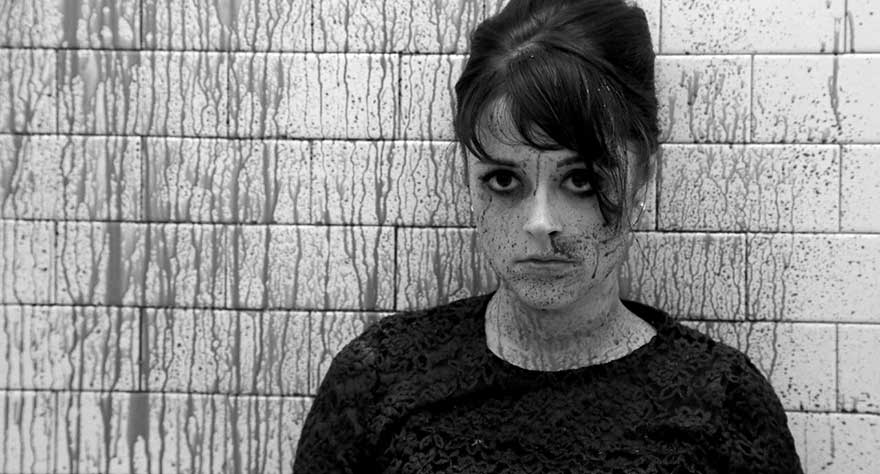
Offensive, lazy, and obnoxious, 'Darling' is asinine from start to finish.

Offensive, lazy, and obnoxious, 'Darling' is asinine from start to finish.
There’s something off with Darling, Mickey Keating’s latest horror movie (his second in 2015, after unveiling Pod at SXSW). Shooting in black-and-white on a presumably low budget (given its single location and glossy digital sheen), Keating’s film is a combination of familiar elements from psychological horror that never feels genuine in its execution save for the set-up: a young woman (Lauren Ashley Carter, referred to only as “Darling”) gets a new job as a caretaker for a large house in Manhattan, which the owner (Sean Young) claims is the oldest house in the city. But right before the homeowner leaves Darling to care for the house on her own, she also mentions two other pieces of information: the house has a reputation for being haunted, and the previous caretaker jumped from the roof to her death. Darling doesn’t seem to mind, seemingly unfazed by her new boss’ oversights.
With the owner out of the way, Darling turns into a largely one person show for Carter, who goes insane as she picks up on some strange things in the house: a room she can’t enter, a necklace with an upside-down cross, doors opening on their own, and other sorts of things that can only be attributed to unseen, sinister forces. Keating shows an awareness for traits commonly associated with austere, refined horror (rigorously composed shots, an emphasis on mood, and obfuscated character development, to name a few) but he has no idea how to properly implement them. Darling is woefully underdeveloped, with an ominous shot of some scars on her body serving as backstory, and the eventual reveal of Darling as a victim of sexual trauma is more offensive in its laziness than its insensitivity. Keating makes his protagonist nothing more than a victim succumbing to her traumatic past, and by doing so exposes his usage of sexual/physical abuse as a plot device, the sort of behaviour that should be left in the time period Darling tries to emulate.
The offensiveness of Keating’s story might not have been so transparent if everything else didn’t feel so half-baked. A five-chapter structure feels as superfluous as the different typefaces used to introduce each section, but the worst part has to be Keating’s insistence on stroboscopic effects and quick cuts throughout. What might have been an attempt to portray Darling’s fractured mental state turns into an obnoxious and annoying attempt to shock rather than scare, relying on bursts of static over Carter’s screaming face as a way to jolt viewers awake. Carter, looking like a grown-up Wednesday Addams, manages to come out of the film unscathed, doing a fine job acting unhinged while easily carrying the film along on her shoulders. But no matter how magnetic Carter’s presence is in front of the camera, it’s no escape from Keating’s asinine attempt at both a horror film and a character study.
This review was originally published on November 16, 2015 as part of our coverage of the Ithaca International Film Festival.